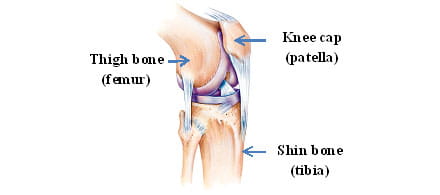What is Patellofemoral Dysfunction or Patellofemoral Pain Syndrome?

Patellofemoral dysfunction is pain in the front of your knee when your kneecap (patella) does not glide how it should at the end of your thigh bone (femur).
How Do I Know I May Have It?
Patellofemoral dysfunction is often seen in teens and is more common in females. You might have this if you have pain in the front or back of your knees. It is often worse with:
- Running and jumping sports
- Sitting for a long time
- Going up stairs
How Is It Diagnosed?
Your doctor will do an exam to see if you have patellofemoral dysfunction. It is important to make sure there are no other problems causing the pain.
What Causes Patellofemoral Dysfunction?
Patellofemoral dysfunction in children occurs for these reasons:
- Weak muscles in the upper thigh
- Weak hip muscles
- Weak core muscles (stomach and back muscles)
- Flat feet
How Do I Treat Patellofemoral Dysfunction?
Patellofemoral dysfunction is most often treated with:
- Exercises (physical therapy) to improve the glide of the kneecap:
- Strengthen muscles in front of the thigh, hips and core
- Stretch muscles in the back of the thigh
- Correct the balance between the muscles in the front of the thigh compared to the muscles in the back of the thigh
- Ice
- Medicine or knee braces (if needed)
- Shoe inserts (can help correct flat feet and reduce knee pain)
What Is the Long-Term Outcome?
If this is not treated, patellofemoral dysfunction can make anterior knee pain worse. It can also lead to problems during sports. Weak hip and core strength or problems with jumping form or running form can lead to other knee problems. It is important to correct the problems causing patellofemoral dysfunction to avoid other knee injuries.
Can Patellofemoral Dysfunction Be Prevented?
You can prevent patellofemoral dysfunction with:
- Proper running and jumping methods
- Strong core (belly and back) and hip muscles
- Flat feet corrections



